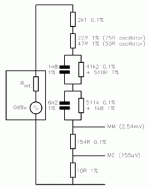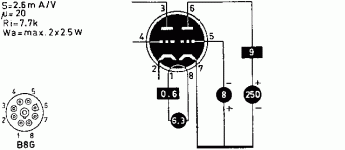50k Zo 820k Zin
http://www.diyaudio.com/forums/analogue-source/73211-inverse-riaa.html
Also remember I don't use "lost constant" in my RIAA filters, so factor that in when measuring
http://www.diyaudio.com/forums/analogue-source/73211-inverse-riaa.html
Also remember I don't use "lost constant" in my RIAA filters, so factor that in when measuring
EC8010's #2. It also has the Neumann constant so don't pay attention to beyond 20kHZ compliance with ours
Salas my signal generator has an output of 600 ohms how to scale 22R for 75R oscillator or 47R for 50R oscillator?
EC8010 wrote in #8 that its about having 2197 Ohm before the RC networks. So don't have 2K1 and the 22R/47R choice, have 1597 and your generator
Thanks Salas. I have problems sourcing 6n2 1% capacitor. 1597R in place of 22R or 47R or in place of 2K1 + 22R or 47R?
Last edited:
I have problems sourcing 6n2 1% capacitor & 1597R 0,1%
Make combinations
Salas my signal generator has an output of 600 ohms how to scale 22R for 75R oscillator or 47R for 50R oscillator?
use a very 2 stage measering amplifier - high Z-in and low Z-out - and place the inverse RIAA between the 2 stages. It should not be impoosible to make such an "Inverse-RIAA-measurement-tool" with low noise and low distortion op-amps like AD 7xx series.
This is all you should know to do this - it's only using of basic design principles and good measurement tool like ARTA.
A very usefull calculator by Jim Hagerman for loading
Hagerman Technology LLC: Cartridge Loading
Thanks to Jim now I understand why the MM needs different resistor loading depending the inductance of the cartridge & the capacitance of the tonearm cable.
Hagerman Technology LLC: Cartridge Loading
Thanks to Jim now I understand why the MM needs different resistor loading depending the inductance of the cartridge & the capacitance of the tonearm cable.
Last edited:
- Home
- Source & Line
- Analogue Source
- Valve Itch phono

